The word "biosecurity" refers to an overall system for protecting chickens from infectious diseases. Each backyard chicken keeper will approach biosecurity differently based on personal risk tolerances, but implementing even the most basic biosecurity measures significantly limits potential health threats to a flock.
Healthy chickens don't stand a chance of remaining healthy if we schlepp pathogens into their yard. Potential disease carriers include: people, including you and other poultry keepers, clothing, shoes, equipment, (shovels, tractors, wheelbarrows, car tires) and all wildlife. Limit potential disease carriers from entering the chicken yard from high-risk locations, which include: all other poultry yards, poultry swaps, poultry shows, livestock auctions, fairs and feed stores.
Avoid visiting other chicken yards, farms, poultry shows, agricultural fairs, chicken swaps, auctions or other places live birds are found during a poultry health crisis such as an Avian Influenza or virulent Newcastle Disease outbreak.
Biosecurity Best Practices
- Any potential carriers entering the chicken yard from high risk areas should be cleaned & equipment, disinfected.
- Require visitors from high risk locations to wash hands, change clothing and wear disposable shoe covers or dedicated rubber-soled footwear before entering your yard.
- Change your clothes, wear clean shoes and wash hands when returning home from high risk locations and when caring for sick chickens in isolation before tending to other flock members.
- Clean then disinfect feeders and waterers regularly.
- Empty, clean and disinfect chicken coops at least annually.
- Don't attract wild birds to the area with bird feeders or bird baths.
- Control the rodent and fly populations in the chicken yard.
- Never add birds exhibiting symptoms of disease to your flock. Contact state resources listed HERE for further direction.
- Obtain necropsies when birds die under unknown or suspicious circumstances. Find your state veterinary pathology lab HERE.
SANITIZING
I use un-activated Oxine to disinfect (1/4 teaspoon per gallon of water). Oxine is more effective and safer than chlorine bleach. Learn more about Oxine here and here. Bleach can be used in a 3:2 ratio of 3 parts bleach, 2 parts water. Other excellent sanitizers are Lysol and Virkon S
WHY QUARANTINE?
It is safest not to bring new birds from outside sources into a flock at all and very unsafe to bring new birds in from a flock that is not NPIP certified. If you choose to accept the risk of bringing birds from other flocks into your backyard, it's very important to implement proper quarantine procedures.
A chicken can appear perfectly healthy while being a disease carrier. During times of stress such as moving from one home to another, latent diseases can become active, causing the bird to exhibit symptoms of illness and shed pathogens, infecting other chickens. A quarantine period provides the opportunity to watch for symptoms of illnesses as they emerge before exposing the rest of the flock to disease. Failure to quarantine properly can result in the death of all the birds.
HOW TO QUARANTINE
- Keep new birds at least 12 yards away from the existing flock. Some diseases, such as mycoplasma gallisepticum, can travel in the air.
- Keep new birds confined and isolated in a dedicated coop, pen or other suitable housing area.
- Don't share equipment, clothes, shoes, feeders, waterers between the new birds & existing flock. For example: do not wear the same shoes to feed the new birds and then walk to the existing flock in the same, unsanitized shoes.
- The longer a bird is in quarantine, the greater the opportunity for diseases to manifest themselves and be detected. Three weeks is the bare minimum recommendation, but 30-60 days is better.
- During the quarantine period, testing can be performed if desired (eg: fecal float testing for worms, bloodwork for other communicable diseases) and a lice or mite infestation can be identified and treated.
- Observe new birds for signs of illness including: coughing, sneezing, gurgling, red, swollen or watery eyes, eye or nasal discharge, paralysis of legs and/or wings, discolored combs/wattles, drowsiness, depression, uncoordinated movements, lack of appetite, failure to drink and/or unusual droppings (bloody, worms, diarrhea).
- Once the quarantine period is over and all the new birds still appear healthy, they can be integrated gradually into the existing flock.
Kathy Shea Mormino
Affectionately known internationally as The Chicken Chick®, Kathy Shea Mormino shares a fun-loving, informative style to raising backyard chickens. …Read on


shop my SPONSORS
The word "biosecurity" refers to an overall system for protecting chickens from infectious diseases. Each backyard chicken keeper will approach biosecurity differently based on personal risk tolerances, but implementing even the most basic biosecurity measures significantly limits potential health threats to a flock.
Healthy chickens don't stand a chance of remaining healthy if we schlepp pathogens into their yard. Potential disease carriers include: people, including you and other poultry keepers, clothing, shoes, equipment, (shovels, tractors, wheelbarrows, car tires) and all wildlife. Limit potential disease carriers from entering the chicken yard from high-risk locations, which include: all other poultry yards, poultry swaps, poultry shows, livestock auctions, fairs and feed stores.
Avoid visiting other chicken yards, farms, poultry shows, agricultural fairs, chicken swaps, auctions or other places live birds are found during a poultry health crisis such as an Avian Influenza or virulent Newcastle Disease outbreak.
Biosecurity Best Practices
- Any potential carriers entering the chicken yard from high risk areas should be cleaned & equipment, disinfected.
- Require visitors from high risk locations to wash hands, change clothing and wear disposable shoe covers or dedicated rubber-soled footwear before entering your yard.
- Change your clothes, wear clean shoes and wash hands when returning home from high risk locations and when caring for sick chickens in isolation before tending to other flock members.
- Clean then disinfect feeders and waterers regularly.
- Empty, clean and disinfect chicken coops at least annually.
- Don't attract wild birds to the area with bird feeders or bird baths.
- Control the rodent and fly populations in the chicken yard.
- Never add birds exhibiting symptoms of disease to your flock. Contact state resources listed HERE for further direction.
- Obtain necropsies when birds die under unknown or suspicious circumstances. Find your state veterinary pathology lab HERE.
SANITIZING
I use un-activated Oxine to disinfect (1/4 teaspoon per gallon of water). Oxine is more effective and safer than chlorine bleach. Learn more about Oxine here and here. Bleach can be used in a 3:2 ratio of 3 parts bleach, 2 parts water. Other excellent sanitizers are Lysol and Virkon S
WHY QUARANTINE?
It is safest not to bring new birds from outside sources into a flock at all and very unsafe to bring new birds in from a flock that is not NPIP certified. If you choose to accept the risk of bringing birds from other flocks into your backyard, it's very important to implement proper quarantine procedures.
A chicken can appear perfectly healthy while being a disease carrier. During times of stress such as moving from one home to another, latent diseases can become active, causing the bird to exhibit symptoms of illness and shed pathogens, infecting other chickens. A quarantine period provides the opportunity to watch for symptoms of illnesses as they emerge before exposing the rest of the flock to disease. Failure to quarantine properly can result in the death of all the birds.
HOW TO QUARANTINE
- Keep new birds at least 12 yards away from the existing flock. Some diseases, such as mycoplasma gallisepticum, can travel in the air.
- Keep new birds confined and isolated in a dedicated coop, pen or other suitable housing area.
- Don't share equipment, clothes, shoes, feeders, waterers between the new birds & existing flock. For example: do not wear the same shoes to feed the new birds and then walk to the existing flock in the same, unsanitized shoes.
- The longer a bird is in quarantine, the greater the opportunity for diseases to manifest themselves and be detected. Three weeks is the bare minimum recommendation, but 30-60 days is better.
- During the quarantine period, testing can be performed if desired (eg: fecal float testing for worms, bloodwork for other communicable diseases) and a lice or mite infestation can be identified and treated.
- Observe new birds for signs of illness including: coughing, sneezing, gurgling, red, swollen or watery eyes, eye or nasal discharge, paralysis of legs and/or wings, discolored combs/wattles, drowsiness, depression, uncoordinated movements, lack of appetite, failure to drink and/or unusual droppings (bloody, worms, diarrhea).
- Once the quarantine period is over and all the new birds still appear healthy, they can be integrated gradually into the existing flock.



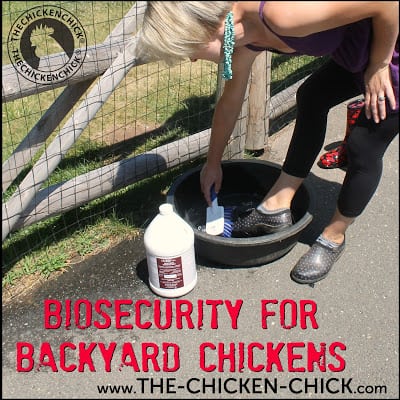
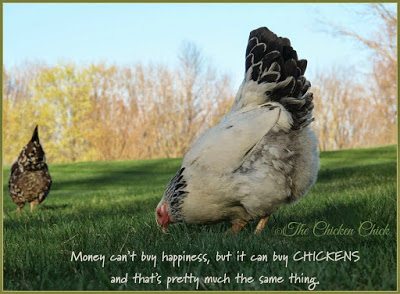
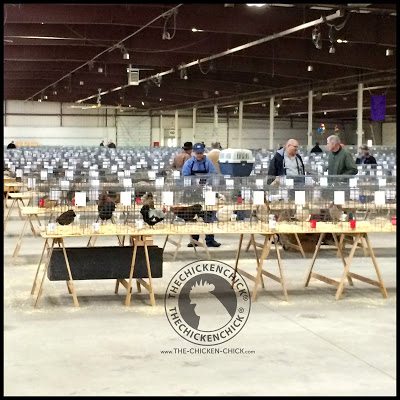
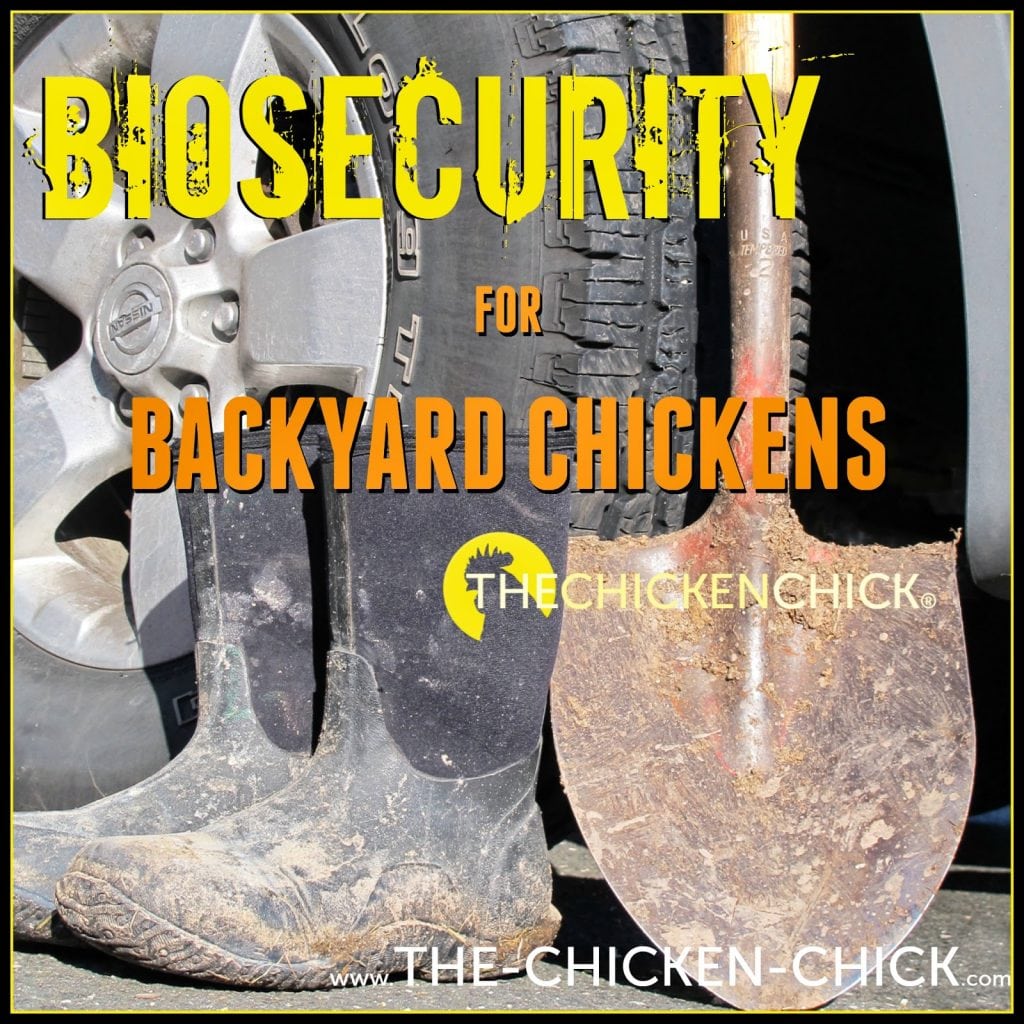
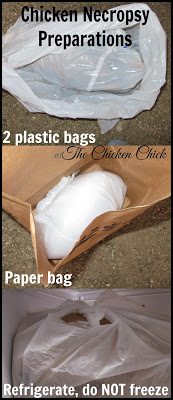
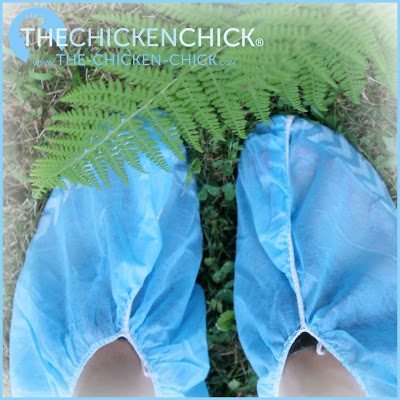
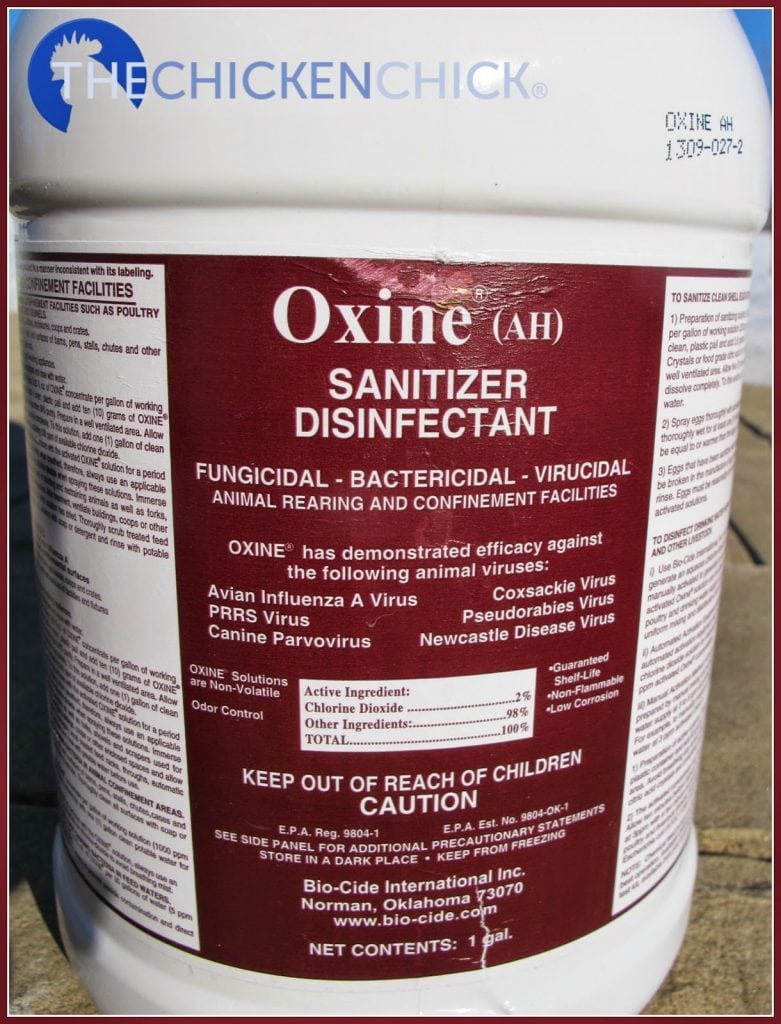
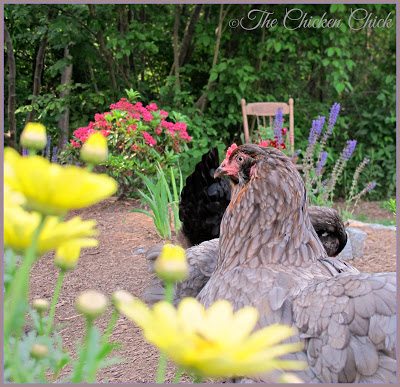
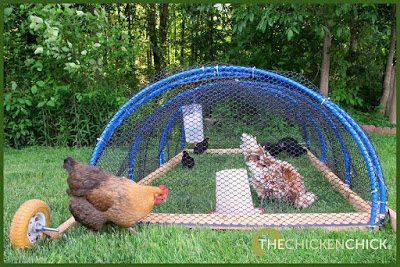






















I am following your advice and ordering some Oxine today. Just got back from TSC and was surprised I couldn’t find it there. Maybe you can influence them to consider carrying it. They need little isle tags that say “Chicken Chick recommended product.”
love your blog! I subscribe to your emails! Thanks for the chance to win!
A farm girl can never have enough barn shoes ? This would be my first pair of Sloggers
Oh, I need those little booties for when I go to my mother-in-law’s house. We both have chickens and I don’t want to cross contaminate our flocks. I love, love, love the Sloggers. :)
Great article–thanks, Kathy!